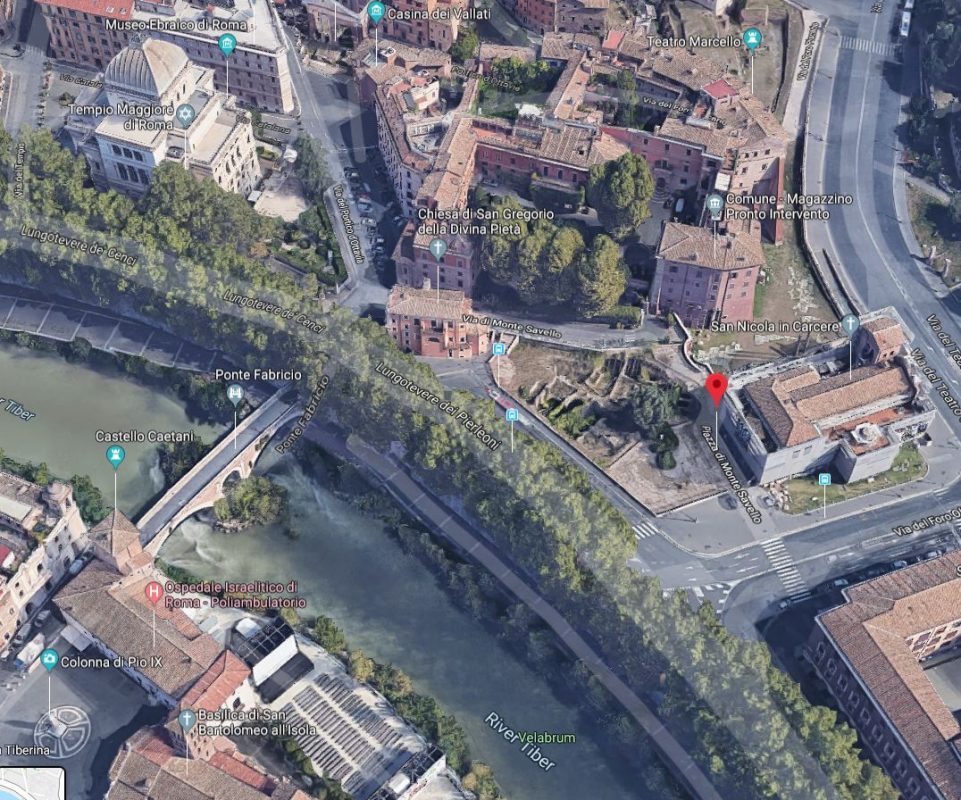Walk along the eastern side of the River Tiber, where Fabricius Bridge connects Tiber Island to the historic centre, and you’ll stumble upon a true treasure of Hidden Rome: the Ghettarello.
Nestled between the Church of Saint Nicola in Chains and an eyesore of a modern bus stop on the road running along the Tiber is a small archaeological site consisting of several subterranean buildings.
Most people pass by without a second glance. Such is its size that blink and you miss it. But this archaeological area preserves a fascinating history, overshadowed by its neighbour, the better-known Jewish Ghetto just a minute up the road.
The Discovery
This site first came to light in 1999. But it was abandoned soon after when the city’s funds dried up. To the untrained eye, these ruins (and most other ruins in Rome) could be 200 or 2,000 years old. They belong, however, to Rome’s more recent history. (At least relatively speaking).
The Romans called this site the “Ghettarello” or “little Ghetto” in English. It was once a bustling neighbourhood, home to both Roman Catholics and Jews, who had lived and worked side-by-side since at least the 15th century.


True, it was a residential area. But the Ghettarello’s main purpose was to provide food for the Jewish Ghetto on its border, whose burgeoning population numbered around 2,000 in 1620 and just over 4,000 by 1733.
What was the Ghettarello?
The Ghettarello was the home of grain warehouses, stables and bakeries. It also housed the city’s sixth scòla (congregation) of Porta Leone, which sporadically closed and reopened until its definitive closure in 1735.

The Roman authorities first tried to close the Ghettarello in 1620. The intervention of the Universitas Hebraeorum Urbis (the representative body of Rome’s ancient Jewish community), however, saved it. Though this did come at a cost of a thousand gold coins paid directly to the Pontifical State.
The Vatican put this money towards preserving the Casa dei Catecumeni, where Jews were forced to undergo baptisms.
Most of what we know about the Ghettarello comes from a document written in the 1730s and currently stored in the Historical Archive of Rome’s Jewish Community (ASCER). Detailing Rome’s topography, it reads:
“Passato il portone del Ghetto detto Quattro Capi vi è la strada avanti al palazzo dei SS.Savelli, che introduce al vicoletto chiamato Porta Leone, a mano dritta vi è un portone dove si entra al cortiletto detto il Ghettarello il quale portone si apre e si serra nel tempo che si aprono e si serrano i portoni del Ghetto.”
“Just past the gate of the Ghetto, called “Four Heads” (after the statues on Fabricius Bridge), is the street in front of the Palace of SS. Savelli. This leads to a small alley called Porta Leone, on the right-hand side of which is a gate leading to the courtyard of the “Ghettarello.” The gates of the Ghettarello are opened and closed at the same time as those of the Jewish Ghetto.”

The Ghettarello today
The street in question corresponds exactly to the current Via di Monte Savello, which runs just behind the Ghettarello, separating Palazzo Orsini (the Theatre of Marcellus) from the former church of Saint Gregory of the Divine Piety. Walk along this road, or the Lungotevere de’ Cenci today, and the ruins of the Ghetterello stretch out before you.
Want to learn more about Rome’s fascinating Jewish history? Come and join me on one of my next tours!






